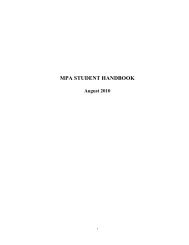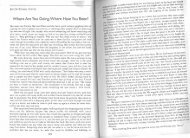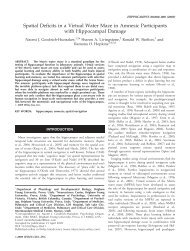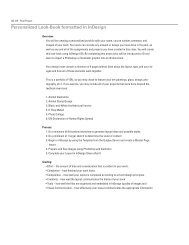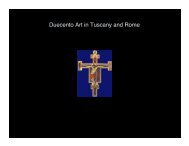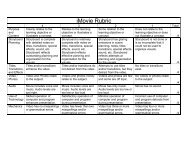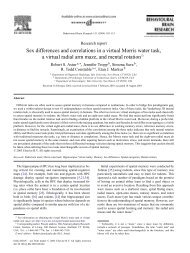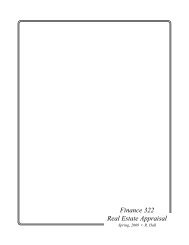Currency substitution in selected African countries - Emerald
Currency substitution in selected African countries - Emerald
Currency substitution in selected African countries - Emerald
Create successful ePaper yourself
Turn your PDF publications into a flip-book with our unique Google optimized e-Paper software.
5. Conclusion<br />
In this paper we exam<strong>in</strong>e the existence of currency <strong>substitution</strong> <strong>in</strong> eight <strong>African</strong><br />
<strong>countries</strong>. Us<strong>in</strong>g a portfolio balance model we estimate money demand functions where<br />
expected depreciation rate of the exchange rate is an explanatory variable. A<br />
significant negative coefficient for this expected depreciation rate of the exchange rate<br />
<strong>in</strong>dicates the presence of currency <strong>substitution</strong>. We exam<strong>in</strong>ed currency <strong>substitution</strong>s<br />
related to regional currency and we f<strong>in</strong>d the existence of currency <strong>substitution</strong> <strong>in</strong> three<br />
<strong>countries</strong>- namely, Ghana (anchor currency: CFA franc), Nigeria (anchor currency: CFA<br />
franc) and South Africa (anchor currency: US dollar). We also estimated the money<br />
demand function us<strong>in</strong>g the US dollar as an anchor currency for all <strong>countries</strong>. We f<strong>in</strong>d<br />
that currency <strong>substitution</strong> exists <strong>in</strong> Nigeria but not <strong>in</strong> Ghana. Also for Morocco we f<strong>in</strong>d<br />
weak evidence of currency <strong>substitution</strong> when US dollar is the anchor currency. These<br />
results <strong>in</strong>dicate that we need to be careful about choice of anchor currency when we are<br />
conduct<strong>in</strong>g analysis related to currency <strong>substitution</strong>.<br />
<strong>Currency</strong><br />
<strong>substitution</strong><br />
637<br />
Notes<br />
1. Dontsi (2001) adds a new security motive for <strong>African</strong> <strong>countries</strong> especially as fund deposits <strong>in</strong><br />
European banks rema<strong>in</strong> a safe haven for embezzled public funds and rents from illicit<br />
activities for <strong>African</strong> corrupt rul<strong>in</strong>g clans.<br />
2. See currency <strong>substitution</strong> studies by Miles (1978, 1981), Bordo and Choudhri (1982),<br />
Imrohoroglu (1994) and He and Sharma (1997) for USA and Canada; Sharma et al. (2005) for<br />
Asian <strong>countries</strong>; Artis et al. (1993), Mizen and Pentecost (1994), and Spencer (1997) for other<br />
European <strong>countries</strong>; Calvo and Végh (1993) for Bolivia, Peru, and Uruguay. Agénor and<br />
Khan (1996) found evidence of currency <strong>substitution</strong> <strong>in</strong> ten develop<strong>in</strong>g <strong>countries</strong> of Africa<br />
(Morocco, Nigeria), Asia (Bangladesh, Indonesia, Malaysia, Philipp<strong>in</strong>es, and Pakistan) and<br />
Lat<strong>in</strong> America (Mexico, Brazil, and Ecuador). Selçuk (2003) and Buchs (2000) found existence<br />
of currency <strong>substitution</strong> <strong>in</strong> a number of Eastern European and Middle Eastern <strong>countries</strong> as<br />
well as Russia. Civcir (2003) found existence of currency <strong>substitution</strong> <strong>in</strong> Turkey while Alami<br />
(2001) found that the portfolio motive, not the transaction motive, is the ma<strong>in</strong> reason for<br />
foreign currency hold<strong>in</strong>g <strong>in</strong> Egypt.<br />
3. Corrado (2008) recently constructed a theoretical model for currency <strong>substitution</strong> us<strong>in</strong>g a<br />
“New Open Economy Macroeconomics” framework.<br />
4. For a detailed discussion see Dontsi (2001).<br />
5. It stands for West <strong>African</strong> Economic and Monetary Union that <strong>in</strong>clude eight <strong>countries</strong>:<br />
Ben<strong>in</strong>, Burk<strong>in</strong>a Faso, Côte d’Ivoire, Gu<strong>in</strong>ea-Bissau, Mali, Niger, Senegal and Togo.<br />
6. Although we have a dist<strong>in</strong>ct literature about home bias <strong>in</strong> asset hold<strong>in</strong>g, however, we believe<br />
that for <strong>African</strong> <strong>countries</strong> the home bias would not be pronounced.<br />
7. CFA is a French acronym that stands for “Communauté F<strong>in</strong>ancière Africa<strong>in</strong>e” or <strong>African</strong><br />
F<strong>in</strong>ancial Community. It is a group of eight <strong>countries</strong> <strong>in</strong> Western Africa. The <strong>countries</strong> part<br />
of the CFA are, <strong>in</strong> alphabetical order, Ben<strong>in</strong>, Burk<strong>in</strong>a-Faso, Côte D’Ivoire, Gu<strong>in</strong>ea-Bissau,<br />
Mali, Niger, Senegal and Togo. They use a common currency called “Franc CFA” or CFA<br />
franc <strong>in</strong> English. This currency is tied to the Euro through the French franc.<br />
8. Inflation is measured as the percentage change <strong>in</strong> the consumer price <strong>in</strong>dex <strong>in</strong> all <strong>countries</strong><br />
but for Tunisia and Zambia it is measured by the percentage change <strong>in</strong> the GDP deflator.<br />
9. To save space the results of unit root tests are not reported but are available from the<br />
authors.



